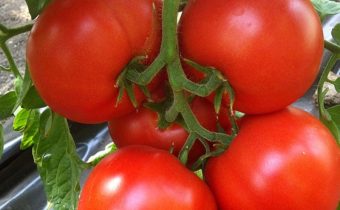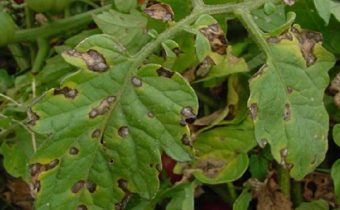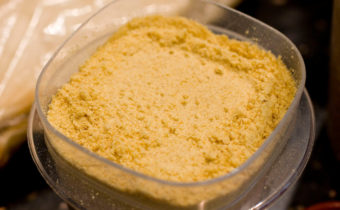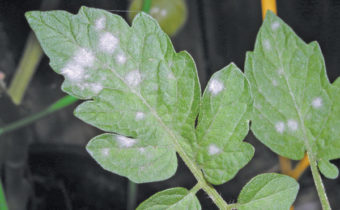The main advantages of the variety of tomato "Alesha Popovich"
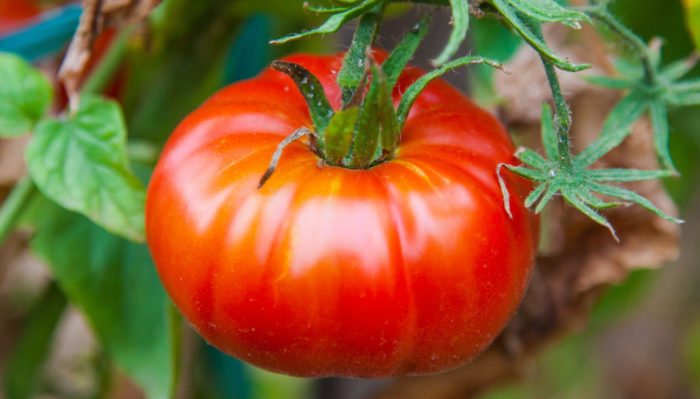
A variety of medium early ripening, tall, indeterminate type, recommended for growing in greenhouses in most parts of the middle belt. In the southern regions it can produce a full crop in the open ground.
Since many lovers of tomato are interested in Alyosha Popovich's tomato, we present well-known characteristics and description of the variety.
The main thing about the variety
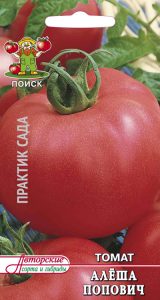 Tomato bushes are tall and powerful - really real heroes. The height reaches 1.8 -2.0 meters in the greenhouse. The plant is characterized by the ability to set fruit over the entire height, and to the very frost. In the opinion of many vegetable growers, the variety is demanding of growing conditions, especially illumination and soil composition. Yield with good care - up to 15 kg per sq.m.
Tomato bushes are tall and powerful - really real heroes. The height reaches 1.8 -2.0 meters in the greenhouse. The plant is characterized by the ability to set fruit over the entire height, and to the very frost. In the opinion of many vegetable growers, the variety is demanding of growing conditions, especially illumination and soil composition. Yield with good care - up to 15 kg per sq.m.
Despite the “heroic” name of the variety, the fruits are not gigantic:
- The average weight of a tomato is 200-250g.
- In the brush are from 4 to 6 fruits.
- The color, even in ripe tomatoes, is pinkish red.
- The flesh is juicy, pleasant sweet-sour taste.
- The shape is flat - round, slightly ribbed.
- Used mainly as a salad variety, suitable for making juices and ketchups.
Diseases and pests
The variety is resistant to the main diseases of tomatoes - tobacco mosaic, Fusarium. However, only proper care, comfortable conditions of maintenance and preventive measures can guarantee a high and healthy yield during the entire period of fruiting. To avoid infection of fungal and viral diseases of tomatoes it is necessary:
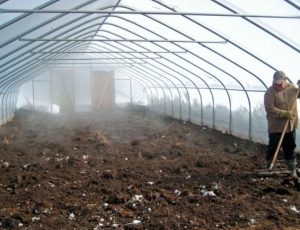
- When using a greenhouse, provide for the disinfection of walls and garden soil inside, as well as the treatment of all auxiliary equipment - supports, and the trellis - with disinfectant solution.
- Be sure to follow the rules of crop rotation - planted in a place where the nightshade grew not earlier than in three years.
- Treat seeds before planting, harden seedlings.
- For healing the soil use sidderaty.
- To prevent diseases, treat tomatoes with phytosporin, copper-containing preparations.
On suburban areas usually do without the use of insecticidal preparations to combat these pests - use various popular methods - spraying decoction of wormwood, infusion of ashes. Slugs and Colorado beetles are harvested by hand, preventing the development of larvae.
See also: Tomato "Pink Honey" characteristic and description of the variety
What is interesting grade?
 One of the most noticeable features of the tomato Alyosha Popovich according to the gardeners reviews, and as can be seen in the photo, is the high yield, moreover, stretched in time - almost to the very frost.
One of the most noticeable features of the tomato Alyosha Popovich according to the gardeners reviews, and as can be seen in the photo, is the high yield, moreover, stretched in time - almost to the very frost.
The fruits ripen gradually, starting from the lower racemes, and further along the entire stem, to the very top.
Advantages:
- Resistance to many diseases of tomatoes.
- Excellent taste and appearance of the fruit.
- Universal use of tomatoes.
The disadvantages, according to reviews, are increased demands on the light, the composition of the soil.The plant reacts sharply to insufficient humidity or low temperature during cooling.
Features of growing varieties
In order to get strong healthy tomato seedlings, it is important to prepare the seeds correctly - process with a disinfecting 1% solution of potassium permanganate, growth stimulants.
Land for sowing seeds is prepared in advance from a mixture of garden soil with compost and ash. If the ground is clay, add peat or sand to create a loose, breathable structure. In order to avoid contamination of plants with pathogenic bacteria, land is used from areas where during the last years solanaceous crops have not grown and are disinfected by roasting in the oven or freezing.
Growing seedlings
The ground in the seedling boxes is moistened, the prepared seeds are laid out after 2-3 cm, and covered with earth (layer about 5 mm). The boxes are covered with a film or paper, but not tightly, and cleaned in a warm place for germination.
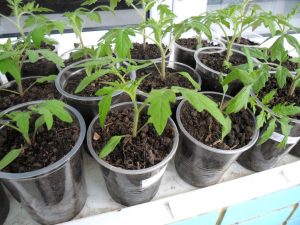 The temperature regime in the first days of seedling development should contribute to its hardening: at night - 13-14 degrees., In the afternoon - 15-17 degrees. Only after two weeks the temperature is raised to 20-22 degrees. Watering all this time should be very moderate and only water at room temperature, to prevent seedling disease black leg.
The temperature regime in the first days of seedling development should contribute to its hardening: at night - 13-14 degrees., In the afternoon - 15-17 degrees. Only after two weeks the temperature is raised to 20-22 degrees. Watering all this time should be very moderate and only water at room temperature, to prevent seedling disease black leg.
When plants have two or three true leaves, you can pick them into separate cups, peat pots or larger containers, the distance between the tomatoes should be no less than 15 cm.
Plants are prepared for planting when stable heat has been established. By this time, the land in the greenhouse and in the beds should be prepared. The holes for planting the seedlings mark at a distance of 60 - 70 cm in rows, 80 cm between rows. In the greenhouse, if you plan to grow a plant in 3 - 4 stems, the wells are prepared even less often - after 70 -80 cm in a row.
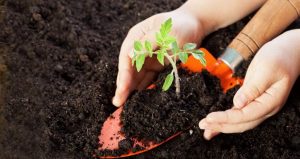 In the ground add rotten manure, ashes, mineral fertilizers, if the soil is dense and clay - peat. Seedlings when planting in a greenhouse or soil should have 5–6 true leaves, a strong stalk and a well-developed root system.
In the ground add rotten manure, ashes, mineral fertilizers, if the soil is dense and clay - peat. Seedlings when planting in a greenhouse or soil should have 5–6 true leaves, a strong stalk and a well-developed root system.
Due to the fact that the variety is very picky about illumination, a place for planting should be selected on the basis of full coverage throughout the daylight hours. Since the plant is tall, provide for their attachment to the supports or trellis.
See also: Description of the variety tomato "Rapunzel"
Even in the presence of greenhouses, night spring frosts can completely destroy your seedlings, so you need to provide additional temporary measures to protect plants from the cold - the arc, spanbond or film.
Planting plants in the ground or greenhouse is desirable in the evening to allow the plants to adapt to direct sunlight. If it is very warm and sunny weather, on the first day, the seedlings on the street should be covered. After disembarkation, seedlings are watered abundantly. Subsequent watering is done every 7-8 days depending on the weather.
Care of plants in the greenhouse and an open ground
The majority of summer residents in the middle lane use greenhouses for growing tall tomatoes Alyosha Popovich - for getting a harvest in them for a long time. However, in more southern areas this variety successfully bears fruit in open ground.
Care includes:
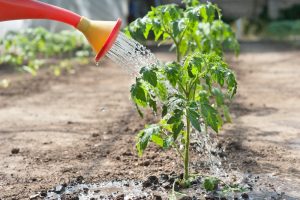
- Watering.
- Loosening.
- Weeding.
- Top dressing with green manure (infusion of mullein with rotted grass, diluted in water at a ratio of 1:10) during the first weeks, until the formation of fruits.
- Fertilizing with mineral fertilizers (containing phosphorus and potassium) in the subsequent period.
- The formation of the plant - with sufficient illumination and sparse planting - in 3-4 stalks, with more thickened plantings in 1-2.
- Gathering and elimination of yellowed leaves, located below the brushes with fruits. When pruning leaves, it is necessary to take into account the state of the plant, since very often the pruning done at the wrong time inhibits them. Masking and pruning should be carried out in the first half of the day, so that the wounds on the plants can dry up before night.
- Garter plants to supports or trellis.
Since tomatoes belong to plants that prefer high soil moisture with minimal air humidity, when they are grown in a greenhouse, one should pay attention to the following:
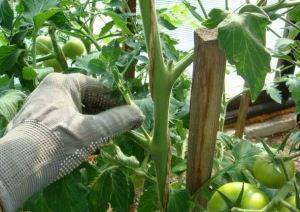
- Watering is carried out directly under the root. To do this, use drip irrigation systems or special containers that supply moisture directly to the roots.
- To preserve soil moisture, use mulch from mowed grass, hay. Mulch will also help your weed control, and after a while it will itself become an excellent fertilizer for plants.
- To ensure low air humidity in the greenhouse, it is imperative to use airing with the help of air vents and doors. At the same time it is impossible to allow drafts.
See also: Why do tomato leaves turn yellow in the greenhouse and how to deal with it?
Healthy, well-groomed plants usually do not get sick, so if there are any signs of disease, you must immediately take appropriate measures. The appearance of the plants will tell you - what they lack:
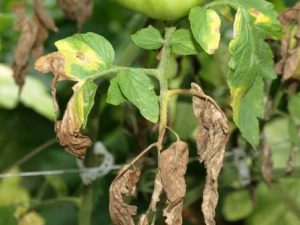
- If the leaves curl into tubes, and the tomato drops flowers - not enough copper.
- Purple leaf color usually indicates phosphate starvation.
- The tips of the tomatoes turn brown and the fruits gradually dry out if there is not enough potassium in the ground.
- A sign of nitrogen starvation - slow growth, yellowing leaves.
If you watch your pets - tomatoes and notice any of these signs in time - feed them with appropriate micronutrient fertilizers and they will thank you a lot.
Video: Tomatoes worth planting


